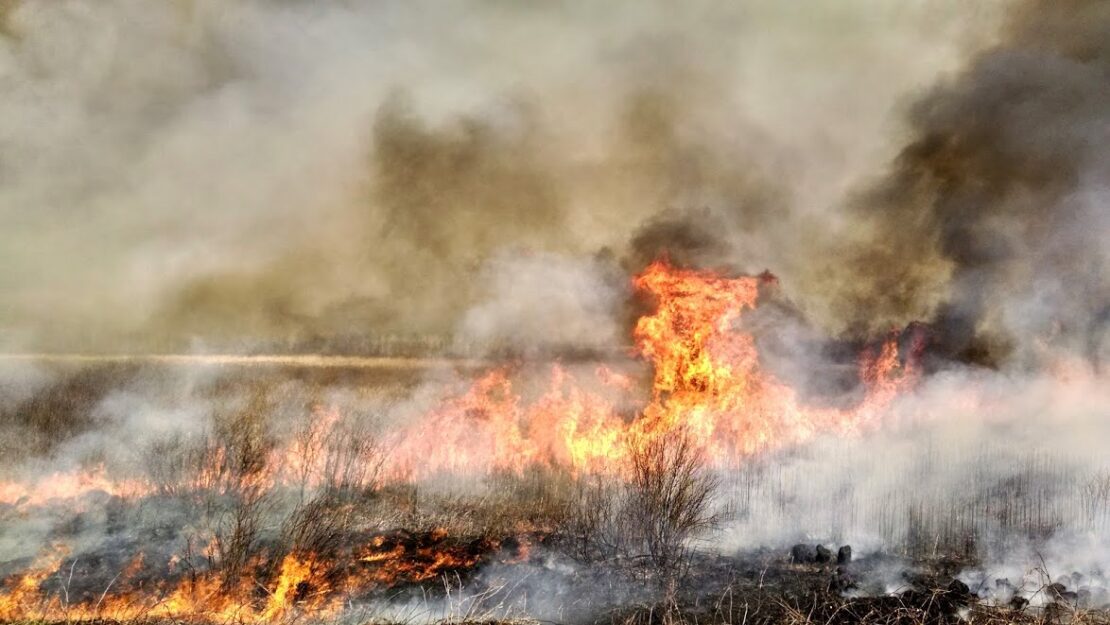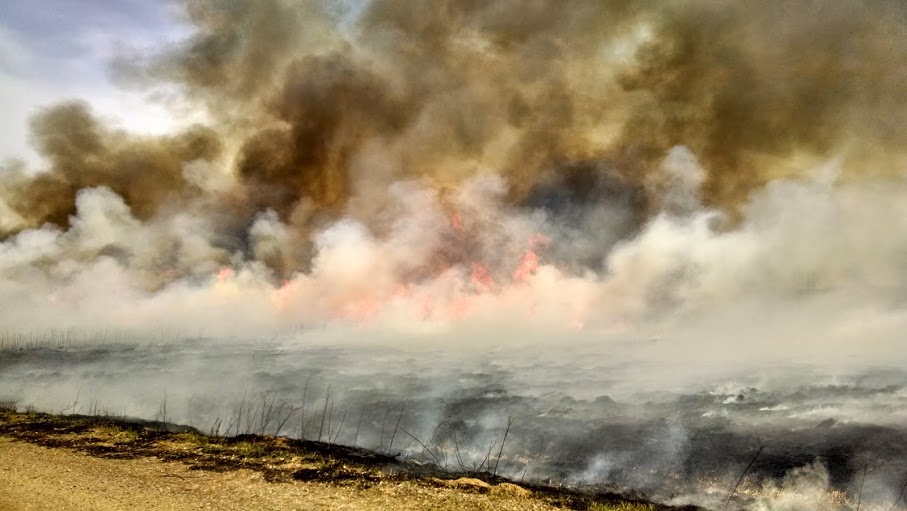Sherburne National Wildlife Refuge [Photo Blog]

By: Nicholas Cox
My crew and I have had the good fortune of spending the last five weeks working with the U.S. Fish and Wildlife Service at the Sherburne National Wildlife Refuge near Princeton, Minnesota. The refuge covers around 30,000 acres and is a mixture of remnant oak savannah, one of the most threatened ecosystems on the globe, as well as expansive wetlands and oak forest. It is an important breeding ground for many waterfowl and is well-known for its sandhill cranes. Numerous species of migratory birds and native wildlife also find sanctuary within the refuge’s boundaries.
Now on our sixth and final week at the refuge, I’m having a hard time waxing poetic in a way that does the experience justice. Luckily, I carry a decent camera around in my pocket; perhaps some photographs can do the job for me.

One of many plants we inspected and attempted to ID throughout the work days. This particular plant was never identified, in case anyone wants to share their knowledge! We found it frequently growing under red cedars.

We decided this guy was probably a Tiger Salamander. He scampered across the road right in front of the truck on the first warm and sunny day at the refuge.

The aspens were the first to break buds and show their long fluffy flowers, followed shortly by the willows.

As soon as the weather cooperated, we got into prescribed burning. Our first burn covered just over 200 acres with the intention of setting back the cattails in the wetlands so that native plants might have a chance to establish.


(Left) The fire engine with which another and myself patrolled the line behind the ignitor, putting out any “spot fires”, fires which jumped across the fire break into an area that was not part of the planned burn.
(Right) A neat broken and bent over tree. In the background, Steve hauls fuels away from the fire break into the interior of the fire unit so that the fire intensity is low around the edges of the unit.

After spending a few days in the sun and putting fire on the ground, we return to snow. With a chainsaw backpack, we hike the refuge’s trails to remove fallen trees in preparation for summer visitors.

An early morning moon while sitting and listening for Sandhill Cranes. We joined a group of volunteers at 5 a.m. to conduct a Crane call survey across the refuge which helps estimate the number of nesting pairs this year. Folks travel from across the continent to experience Sandhill Cranes as they nest and migrate through the refuge. We were lucky enough to observe a mating dance in which the cranes bounced up and down, puffed their chests, and flapped their wings at each other. It’s a cool ritual that’s worth checking out on YouTube.

Thick smoke and dancing flames as the fire is pushed by the wind and consumes cured material left from the past seasons prairie growth. Minutes earlier all this smoke was coming straight at us!

The fires burn at a low enough intensity through prairies that desirable woody species survive the fire without any problem. The ignitor walks along the firebreak dropping flaming drip torch fuel, lighting the dried grasses.


(Left) This prescribed burn covered over 1000 acres, allowing the chance to watch the smoke plume from a comfortable distance. Part of the prescription for burning requires weather and wind conditions that allow for the smoke to rise high into the atmosphere and mix with fresh air, as opposed to conditions that would push the smoke across highways or into neighborhoods.
(Right) Burning cattails give off a pitch black smoke that created some pretty ominous moments as the cloud billowed around us.

Cattails burn at a high intensity, we witnessed flame lengths up to 30 feet as they burned. It’s quite pleasant to watch such an invasive species burn up so violently!

Sandhill cranes and other wildlife returned to the burned areas within a matter of a couple hours. Presumably, their food is much easier to see without the dried grasses hiding it.


The wildlife of the area can pretty easily escape before being harmed by fire. This snake and raccoon both appeared to have been preyed on prior to the prescribed burn, likely by the many birds of prey that reign over the refuge.

Many larger fuels continue to burn after the initial fire passes through an area. “Mopping up” a fire means putting out any fuels left burning or, in this case, gathering burning material in order to consume the maximum amount of fuels in the area, per the intentions of starting this fire in the first place.

Two juvenile eagles monitoring the wetlands. The abundant birds of so many species on the refuge sparked an interest in birding among the crew. Binoculars and bird ID books both now reside in the work truck at all times.

A small little patch of grass along a bend of the St. Francis River is one of the best lunch spots on the refuge. Does this compare to your office?

Throughout six weeks of working and staying away from home, you have to get creative with the limited dinner options. With my now infamous apple crisp, oreo, chocolate fudge, peanut, strawberry, butterscotch, soft-serve sundae, I’m a satisfied customer of our favorite local buffet.